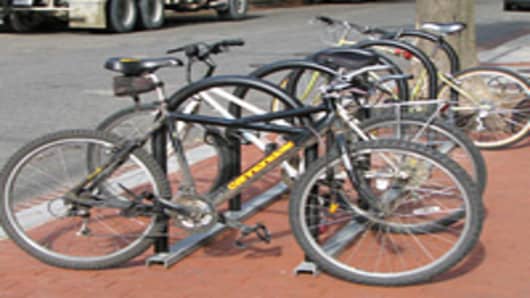The percentage of employees using commuter benefits at workplaces that offer them increased from 28 percent in 2006 to 44 percent in 2007. Meanwhile, 17 percent of employers intend to start a pretax commuter benefits program, compared with just 5 percent in 2006.
Kimpton Hotel employees in Chicago are among those benefiting from this trend. Kimpton workers are eligible to purchase public-transport cards using a payroll deduction option.
"Employees typically save about 35 percent (on cards) by purchasing them pretax," says Jennifer Navarro, public relations manager at Chicago Kimpton Hotels.
Bike-friendly environment
The storm clouds hovering over the U.S. financial system contain a silver lining for bicycle commuters.
As part of the recent $700 billion financial rescue package, businesses can now earn a $20 per month, per employee tax deduction "for the purchase of a bicycle and bicycle improvements, repair and storage, if such bicycle is regularly used for travel between the employee's residence and place of employment."
The government is still working out the details of this program with the Internal Revenue Service, according to a recent story in the New York Times.
Alice Hohl of Columbus, Ohio, saves at least a gallon of gas every time she hops on her bike for a 40-minute ride to and from work.
She rides twice a week, and finds she saves a minimum of $8 per week, or $32 per month.
And thanks her to employer - the Salvation Army - Hohl doesn't need to spend the day smelling like she just completed the Tour de France. The Salvation Army offers showers to employees for washing up after exercise.
Gas rebates and other incentives
Full-time employees at STS Telecom in Cooper City, Fla., received a letter this summer informing them of a new gasoline rebate plan rolling back gas prices to 2006 figures, and thanking them for their contributions and loyalty.
The company reimburses employees for the $2 difference per gallon, spent on the daily commute to work each day. The prorated amount goes into every paycheck.
"Our employees have come through for us and in these challenging financial times, so we needed to come through for them," says Mark Amarant, chief executive at STS Telecom.
Other companies also are taking steps to encourage employees to use less fuel.
Corgan Associates, a Dallas-based architectural firm, recently launched a green campaign that also rewards employees for conserving gas.


